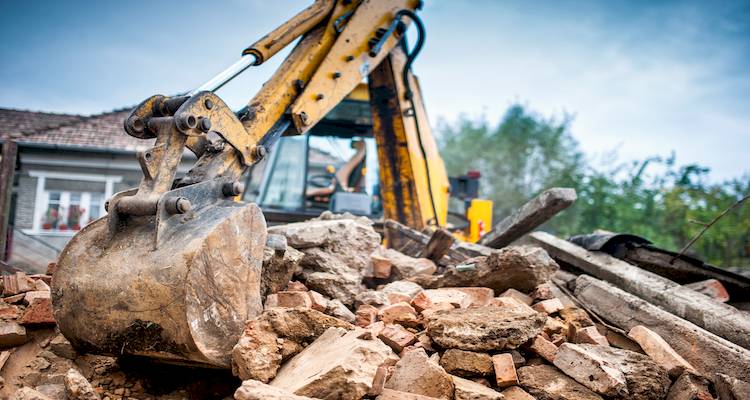Flat Roof Extension Cost
- The average cost of extending a flat roof is around £50,000
- The job will take approximately 8 - 10 weeks to complete
- A complete pricing breakdown which includes cost factors to consider, along with what such a task usually involves
- How long the job should approximately take and a general overview of what types of services can be performed
- How to find and hire flat roof specialists
Want to know the cost of having a flat roof extension installed?
On average, building a flat roof extension will cost around £50,000.
Just need a quote?
If so, we can help! We have a range of flat roofers ready to offer you a free quote!
In this guide, we'll look at the cost of installing different-sized flat roof extensions and explore other related subjects ranging from what's involved in installing flat roof extensions to what you should consider before hiring contractors for the job.
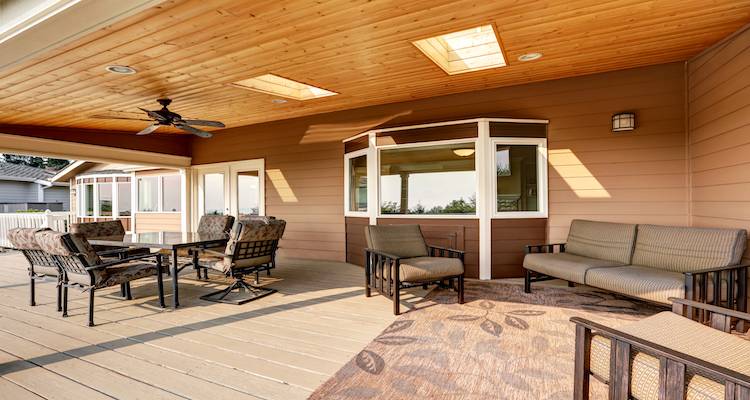
£50,000
Table of Contents
- How Much Is a Flat Roof Extension?
- Labour Costs and Timescales
- Cost Factors of a Flat Roof Extension
- What's Involved in a Flat Roof Extension?
- Can I Install a Flat Roof Extension Myself?
- Building Regulations & Planning Permission for a Flat Roof Extension
- Types of Flat Roof Extension
- Hiring Contractors for Installing a Flat Roof Extension Checklist
- FAQs
- Sources
How Much Is a Flat Roof Extension?
So, what is the cost of a flat roof extension?
The average cost of fitting a flat roof extension is £24,000 to £50,000 for a 20m2 extension, £30,000 to £62,500 for a 25m2 extension, £36,000 to £75,000 for a 30m2 extension, £42,000 to £87,500 for a 35m2 extension, or £48,000 to £100,000 for a 40m2 extension.
What sort of drainage systems can you get for flat roofs? We're thinking of a flat-roof extension but I don't know what the best option is to keep it draining well.
Flat Roof Extension Prices
A range of cost factors can affect the price of this work, including:
- Size of installation
- Ease of access
- Location of property *
*Your location matters since labour prices differ throughout the UK.
| Size of Roof | Labour Cost | Supply Cost | Total Cost |
|---|---|---|---|
| 20m2 | £17,000 to £22,000 | £7,000 to £28,000 | £24,000 to £50,000 |
| 25m2 | £22,000 to £28,000 | £8,000 to £34,500 | £30,000 to £62,500 |
| 30m2 | £28,000 to £34,000 | £8,000 to £31,000 | £36,000 to £75,000 |
| 35m2 | £34,000 to £39,000 | £8,000 to £48,500 | £42,000 to £87,500 |
| 40m2 | £39,000 to £45,000 | £9,000 to £55,000 | £48,000 to £100,000 |
Supply Only Costs
We'll now look at the cost of materials only for installing a flat roof extension. This is as if you were to purchase the materials directly from a retailer.
Starting with the actual roof, the supply costs for an EDPM rubber roof are about £45 to 70 per m2. For felt roofing, expect to pay between £30 and £45 per m2.
Then you must consider the various other material costs for constructing a flat roof extension which would run into the thousands if not tens of thousands of pounds.
The supply costs of a flat roof extension tend to be lower than the cost of labour, but this will depend on a range of factors.
Additional Costs
When having a flat roof added to an extension, you may wish to pay for extra jobs to be undertaken around the same time. Let's have a look at some popular examples.
Patio Installation
A patio can give your garden a new lease of life. Generally taking two days to install, a patio costs around £1,000 to £1,400 to fit in most cases.
Cost of Installing Medium-sized Patios by Type:
- Stone - £1,400 to £2,500
- Brick - £900 to £1,400
- Slate - £1,600 to £2,200
- Concrete - £900 to £2,000
Of course, for small or large patios, the prices would differ, and the costs can vary based on ease of access as well as where you live.
Landscaping
In the case of landscaping, there are various jobs that you could pay for.
Some popular examples of landscaping include:
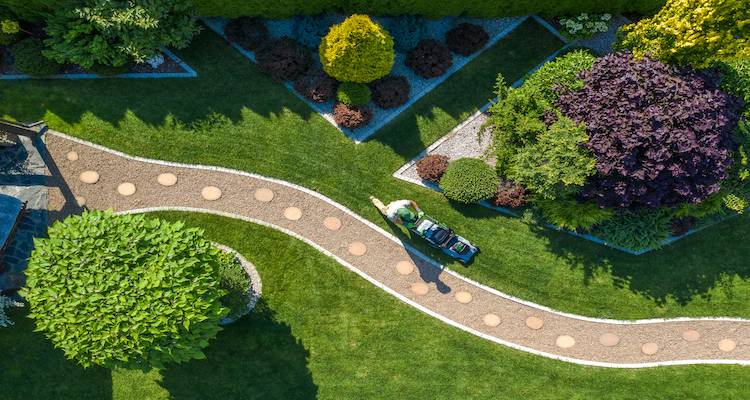
- Lay turf - £13 to £20 per m2
- Artificial Grass Installation - £65 to 80 per m2
- Decking Instalment - £100 to £125 per m2
- Raised Vegetable Bed - £30 to £130 per m2
- Garden Pond - £260 to £530 per m2
Gutter Replacement
Replacing guttering can become necessary when your gutters have worn down, broken, or/and are beyond economical repair.
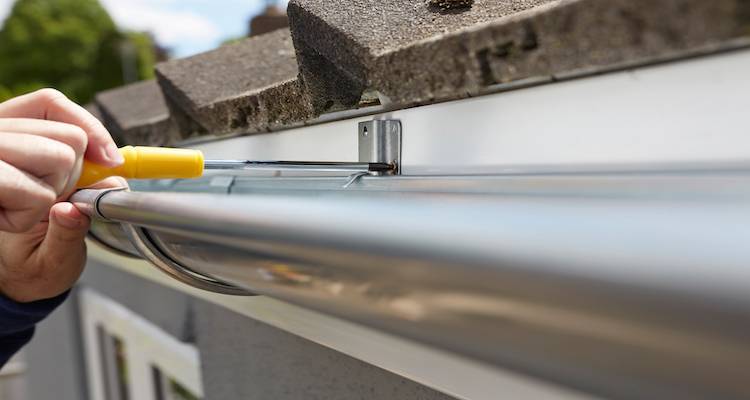
Plastic:
- Two-bed Terrace - £50 to £70
- Three-bed Semi-detached House - £60 to £80
- Four-bed Detached House - £90 to £110
- Bungalow - £50 to £80
Cast Iron:
- Two-bed Terrace - £460 to £580
- Three-bed Semi-detached House - £570 to £670
- Four-bed Detached House - £820 to £920
- Bungalow - £500 to £600
Copper:
- Two-bed Terrace - £650 to £750
- Three-bed Semi-detached House - £800 to £900
- Four-bed Detached House - £1,150 to £1,250
- Bungalow - £700 to £800
Steel:
- Two-bed Terrace - £390 to £490
- Three-bed Semi-detached House - £480 to £490
- Four-bed Detached House -£690 to £790
- Bungalow - £420 to £520
Zinc:
- Two-bed Terrace - £490 to £590
- Three-bed Semi-detached House - £600 to £700
- Four-bed Detached House - £870 to £970
- Bungalow - £530 to £630
Aluminium:
- Two-bed Terrace - £570 to £670
- Three-bed Semi-detached House - £700 to £800
- Four-bed Detached House - £1,000 to £1,100
- Bungalow - £600 to £700
Replacing Roof Tiles
If your house roof needs to be freshened up, this would be a good opportunity to replace roof tiles.
To replace several roof tiles:
- Clay Tiles - £150 to £190
- Concrete Tiles - £180 to £220
- Slate Roof Tiles - £200 to £250
- Replace entire roof tiles - £10,000 to £20,000
Labour Costs and Timescales
The work is likely to last between eight and ten weeks. However, the work could be shorter or longer. An approximate average labour cost for this work would be £20,800 to £26,000, but it would depend on the size of the flat roof extension.
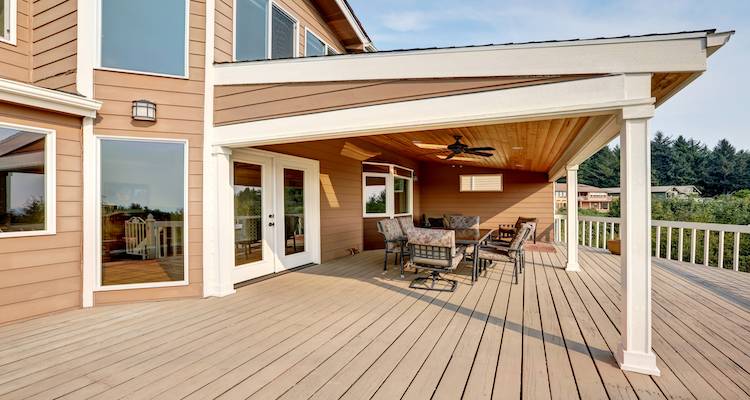
The cost of labour and work duration would vary depending on the size of the flat roof extension and the ease of access. Beyond that, where you live also matters when it comes to the cost of labour specifically.
Cost Factors of a Flat Roof Extension
There are many cost-affecting factors that can shape the price of a flat roof extension.
Type of Flat Roof Extension
First and foremost, the material used is an important consideration for working out the cost of an extension flat roof. A felt flat roof is among the cheaper options, whereas rubber and fibreglass roof options are more middle-ground choices. The same applies to the materials used for the rest of the extension.
In terms of design style, you may specifically want a modern flat roof extension or even a flat roof extension with lantern or overhang flat roof extension. Whatever your choice, the design of the flat roof extension would also shape the overall cost of installation.
Also whether you choose a single-storey extension or double extension etc.
Area of Installation
The larger the work area, the more expensive the materials will cost. Beyond that, a larger work area would mean the job would take longer, and this may also increase the labour cost.
Location of Property
The reason that your location matters is that labour costs differ throughout the UK. Labour prices tend to be higher in the southeast (London in particular) whereas they are generally lower in places like the north of England, Scotland and Northern Ireland.
Ease of Access
The more accessible the workspace, the easier the job will be. As a result, it should take quicker and therefore come with a lower cost of labour.
What's Involved in a Flat Roof Extension?
The process of building a flat roof extension is long and complex and the methods can vary depending on the type of flat roof extension among other factors. We’ll look at an approximate guide to the process.
- Hiring Professionals
Before anything else, you’ll need to hire the right people for the job. You may want to hire a company or even a contractor who, in turn, can assemble the rest of the labour required.
Otherwise, you could contact all necessary professionals separately from a builder to an architect to an electrician, however, this would involve a ton of organisation and planning. There is a lot to take into account.
- Foundations and Construction
After the area has been surveyed, plans put in place and materials purchased, the foundation will be the first focus of the actual project.
Following on from professionals laying down the foundations, the exterior walls will be built. Next, the roof can be installed before work on the interior can commence.
When it comes to interior work, plastering or/and painting the walls is likely to come next, although you may also wish to have roofing insulation added (in some cases, it would be necessary per the regulations/planning permission rules).
After this, other interior work will take place, such as the installation of pipework, electrics and so forth.
- Clean-up
Once all is said and done, a massive clean-up will be needed, and this is where waste removal expenses can come into play, unless already part of the overall cost.
A skip may be used, or those you hire may initially offer to take care of this for you. Make sure to have a plan in place for waste removal before work gets underway.
Can I Install a Flat Roof Extension Myself?
Unfortunately, the vast majority of the work must be done by a professional and even then, you would need the right skills and knowledge. If in any doubt, it’s best to leave all the work to hired and qualified contractors.
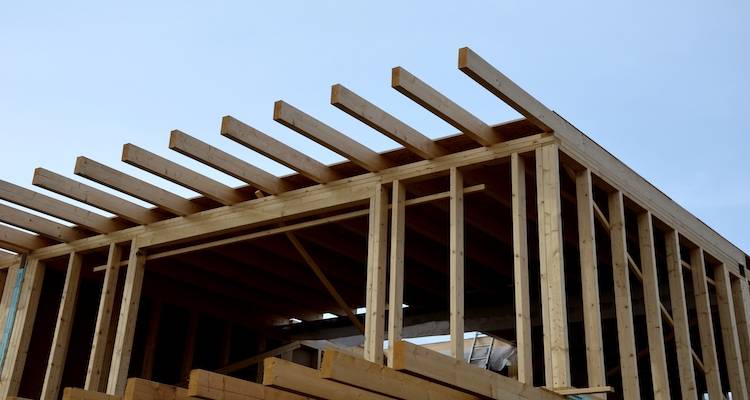
Some of the hazards/dangers include:
- Carrying heavy materials
- Working at a height
- Incorrect installation (this can also pose dangers to safety over time or even in the immediate term too)
Building Regulations & Planning Permission for a Flat Roof Extension
There are both building regulations and planning permission rules to consider for a flat roof extension.
The building regs are as follows:
- A slope of 1:80
- When it comes to drainage, water ought to drain to one or two edges
- Cool roofs require ventilation
- Wind resistance is a necessity, and the roof must have sufficient strength to walk on
- Waterproofing ought to extend up the adjacent walls by no less than 15cm from the roof surface
As for planning permission, this will be required if:
- There are structural changes being made to a roof.
- A new roof covering will differ from the old one, and this would have an impact in relation to a fire.
- If you intend to an area greater than ¼ of the roofing space, you will need to replace its thermal insulation too.
If in doubt, contact your local authority to check whether planning permission is needed. On average, it usually costs about £200 to submit a planning approval application.
Approval can take up to eight weeks but is usually faster. As for building regulations approval, this generally costs around £100 if needed.
For more information, visit the Planning Portal. Please note that rules for England/Wales may differ, to the rest of the UK.
Types of Flat Roof Extension
If you’re unsure what type of extension flat roof to go with, this section is for you. We’ll look at the features and pros and cons of various options in terms of the actual roofing material used.
EDPM
EDPM rubber roofing is a popular choice for flat roofs. Aside from being durable, EDPM requires minimal maintenance and offers a nice aesthetic. It is also relatively eco-friendly and easy to repair.
On the other hand, installation can be tricky, it is relatively damage-prone and you may find it more difficult to find someone to install an EDPM roof than with other options.
Roofing Felt
This option is fairly affordable, suited to various homes, easy to repair and visually appealing.
With that being said, it is not well-suited to foot-fall, requires a professional installation and it is fairly damage-prone. You may need to remove and replace roofing felt more often than you would with EDPM.
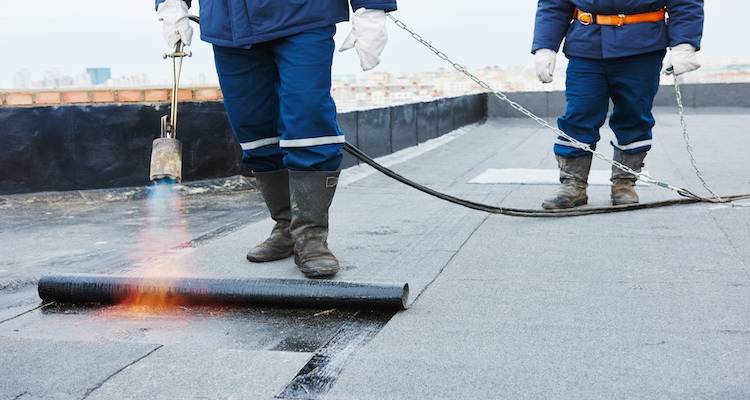
Built-up Roofing
Also known as BUR, built-up roofing is a popular choice for low-slope roofs. They are a great option if you want a flat roof that is water-resistant and protects against UV rays or/and a type of roofing that provides fire resistance.
However, BUR can be time-consuming to install and unless you go with the cold bitumen processes, instalment comes with hazardous fumes. As a result, it should be left to a suitable professional. BUR is also prone to wind-related damage.
Hiring Contractors for Installing a Flat Roof Extension Checklist
Before hiring a professional to fit an extension flat roof, there are some pointers worth taking into account.
Checklist for hiring a contractor to install an extension flat roof:
- What qualifications or/and experience do they have?
- How have customers rated them online?
- Are they part of an accreditation?
FAQs
How do you insulate a flat roof extension?
- Lay 1.2cm of OSB board or plywood along the timber joists as a base
- Fit a vapour control layer The purpose of this is to lower the danger that moisture/condensation will compromise the structure of your flat roof
- Make markings on the vapour control layer at the point in which fixings will pierce through the membrane. To be more specific, you want to do this at the rafter centres and correct axial spacing
- Add butyl tape at the points in which the fixings will pierce the vapour control layer. The reason for this is to ensure the tape forms a seal after penetration
- Next, you’ll want to fit rigid insulation board (the thickness will depend on the type of flat roof and other factors). The exact nature of the rigid insulation board would depend on the height available based on guttering, upstands as well as adornments
- Add the next layer of OSB board or plywood
- Use helical fixings to fix the deck together. You need to pierce every layer of the roof building up.; This includes the flat roof insulation
- Lastly, add a waterproof membrane
How to run cables on a flat felt roof extension?
How long do flat roofs last for?
How long do flat roof extensions last?
How much value will an extension add to my home?
Sources
https://www.roofinglines.co.uk/blog/the-pros-and-cons-of-using-epdm


